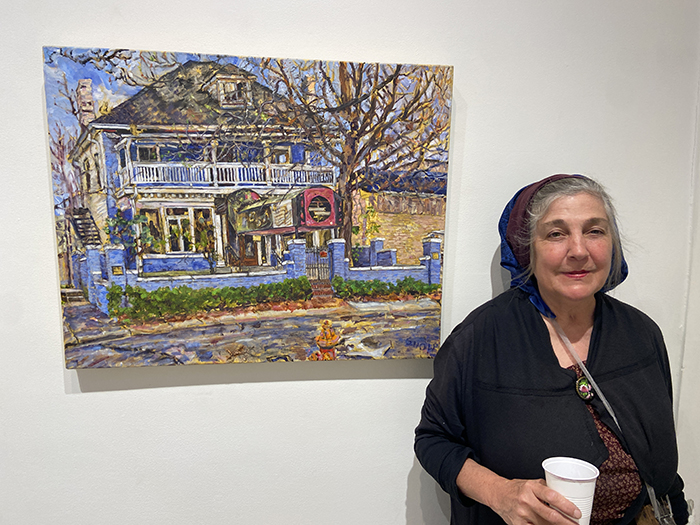JOSEPHINE FOSTER [NOMINATED BY AMINA CAIN]
one of my dearest friends is the artist and musician Peggy Snow, who lives and works in Nashville painting on the streets, portraits of soon to be demolished historic buildings.
when we go on strolls, it is often a singing excursion. a time to invent or recall rounds that we have written or are from ages past, circling in our collective memory.
this day we meet in a city park where the soon to be demolished horse stables are. she is thinking to paint them before they disappear. we recall a black horse we’d met there years ago, who had above its stall the name ‘Saber’. Saber had an empty eye socket (that was a bit spooky – poor beast!) perhaps it had lost its eye to a saber. Saber needs to be remembered, one day we will make a little chant or ditty to co-memorate them.
near the stables we wend about. there is a little overhanging porch on an old brick building, that proves the perfect reverberant chamber to sing a round and borrow its gentle amplification.
we sing a new poem and melody I wrote that I am calling ‘the human stain’. Because it includes the word snow, and is about independence, it will forever remind me of Peggy:
dear, you’ve become dear to me
and this you’ll never know
why I must go wandering
through the deep dark snow.
just as the queen of England
and as the king of Spain
I too must go and wash away
the human stain.
passers-by pass slower to listen as we bellow out the mournful melody that is staggered by stanzas between our two voices.
we then sing ‘I’ll don my high boots on’ Peggy’s lilting ditty, see it in her lilting script, itself a score.

our favorite a capella songs are often themselves about walking, wandering, tromping, tramping…and although a capella means literally in the chapel, or to be sung in a chapel, we are generally in the outdoors when we sing them.
now I want to take you to a very special mirror, where you can perfectly see yourself walking, Peggy says.
we cross the hill and in the distance is a modern building, a building that might not be demolished soon, but maybe one day. while not very pretty it does show our pathway quite faithfully and indeed, we have a perfect view of ourselves approaching that is quite painterly.

we make a sweet pair, I a foot taller than my friend, can you see our familiar bond?

I am reminded of the humble figures in Peggy’s paintings, strangers who stumble in to her frame, and befriend her on her paint sites, and are sketched in and embedded into the composition, as you see below in her portrait of J’J’s market.

I am overcome by the sense that I have entered into the field of her vision, like stepping into the threshold of her canvas, and am delighted, and honored to be there with the painter herself, who I doubt has ever appeared in any of her architectural landscapes.
I take a couple photos of us there, trying to obscure the camera, so we seem just as we are, two dear old friends, wandering in the late winter, albeit snowless landscape, piping little rounds.
Peggy had an art show last year. it was so beautiful to see all these vanished places all together, that she had lovingly captured in oil paint, them all vibrating brilliantly together like a recomposed marvelous village (a village Peggy longs to live in rather than this enormous fast growing Nashville city). yet she was so reluctant to sell any of the paintings, that it created a conflict with the gallerist. I understood her hesitancy, and wrote this poem in response.

Peggy beside her painting’Bozo, Old Blue Clown House’

—
Josephine Foster is an artist from Colorado.
